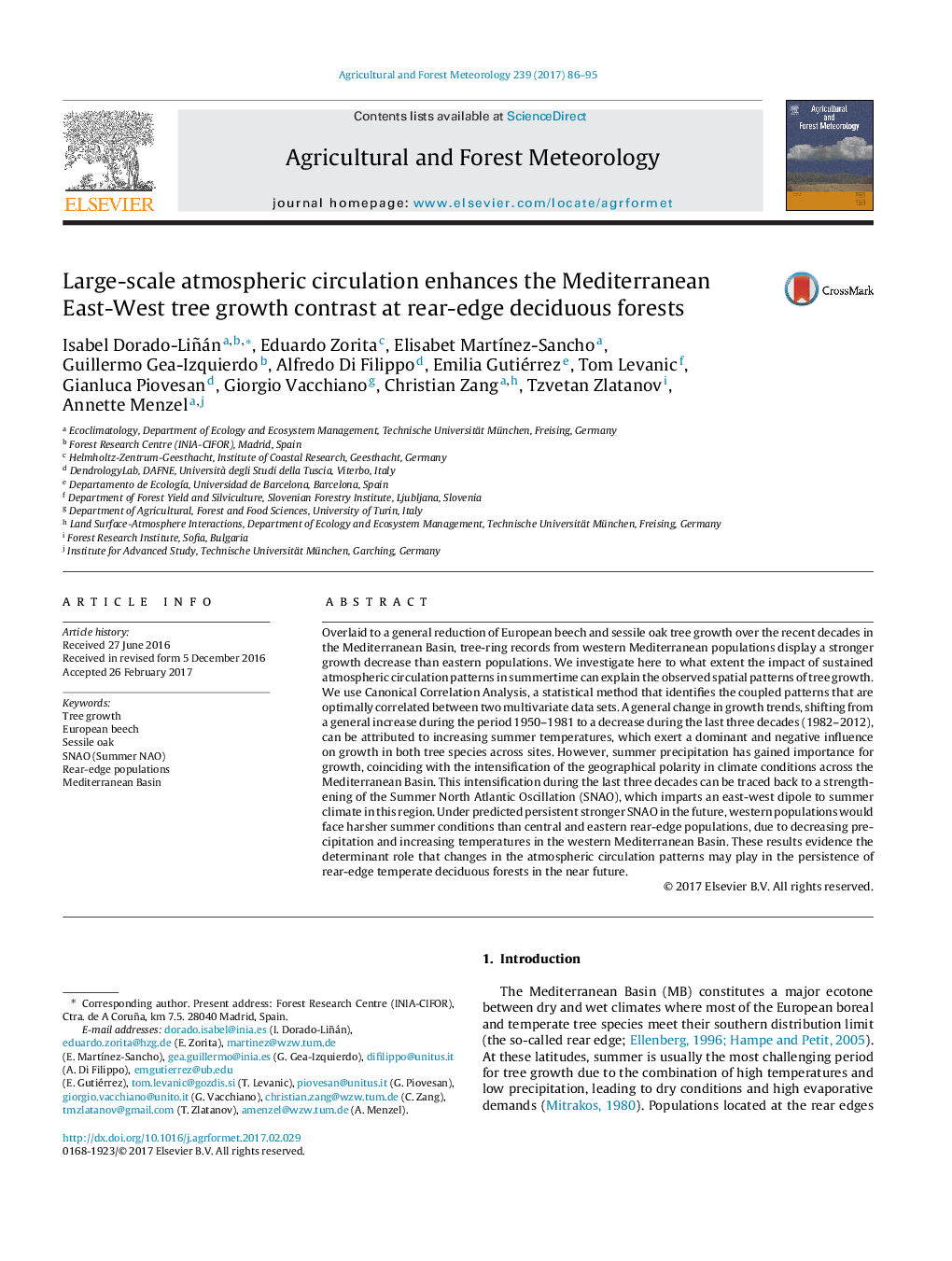| Article ID | Journal | Published Year | Pages | File Type |
|---|---|---|---|---|
| 4758927 | Agricultural and Forest Meteorology | 2017 | 10 Pages |
Abstract
Overlaid to a general reduction of European beech and sessile oak tree growth over the recent decades in the Mediterranean Basin, tree-ring records from western Mediterranean populations display a stronger growth decrease than eastern populations. We investigate here to what extent the impact of sustained atmospheric circulation patterns in summertime can explain the observed spatial patterns of tree growth. We use Canonical Correlation Analysis, a statistical method that identifies the coupled patterns that are optimally correlated between two multivariate data sets. A general change in growth trends, shifting from a general increase during the period 1950-1981 to a decrease during the last three decades (1982-2012), can be attributed to increasing summer temperatures, which exert a dominant and negative influence on growth in both tree species across sites. However, summer precipitation has gained importance for growth, coinciding with the intensification of the geographical polarity in climate conditions across the Mediterranean Basin. This intensification during the last three decades can be traced back to a strengthening of the Summer North Atlantic Oscillation (SNAO), which imparts an east-west dipole to summer climate in this region. Under predicted persistent stronger SNAO in the future, western populations would face harsher summer conditions than central and eastern rear-edge populations, due to decreasing precipitation and increasing temperatures in the western Mediterranean Basin. These results evidence the determinant role that changes in the atmospheric circulation patterns may play in the persistence of rear-edge temperate deciduous forests in the near future.
Related Topics
Physical Sciences and Engineering
Earth and Planetary Sciences
Atmospheric Science
Authors
Isabel Dorado-Liñán, Eduardo Zorita, Elisabet MartÃnez-Sancho, Guillermo Gea-Izquierdo, Alfredo Di Filippo, Emilia Gutiérrez, Tom Levanic, Gianluca Piovesan, Giorgio Vacchiano, Christian Zang, Tzvetan Zlatanov, Annette Menzel,
